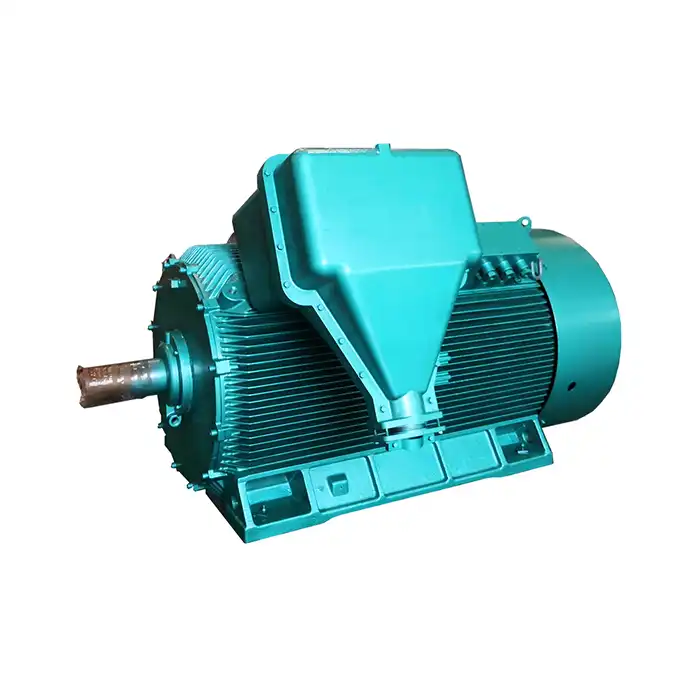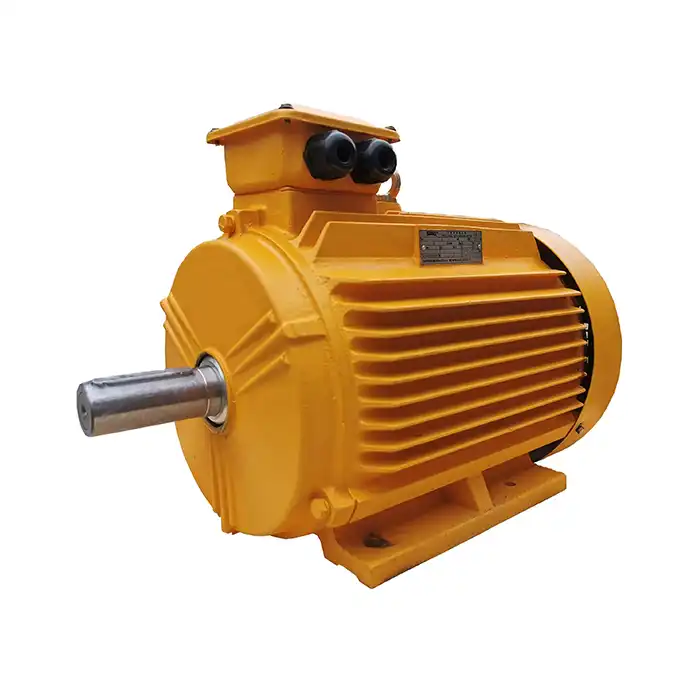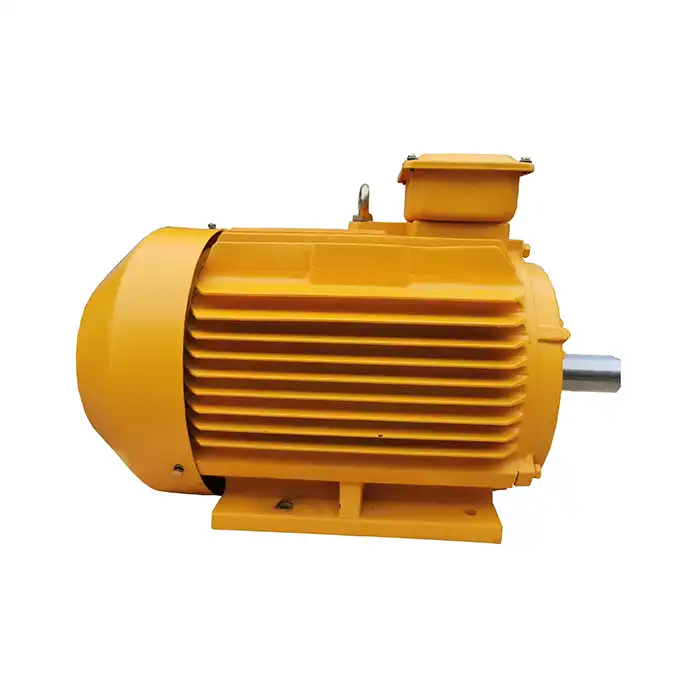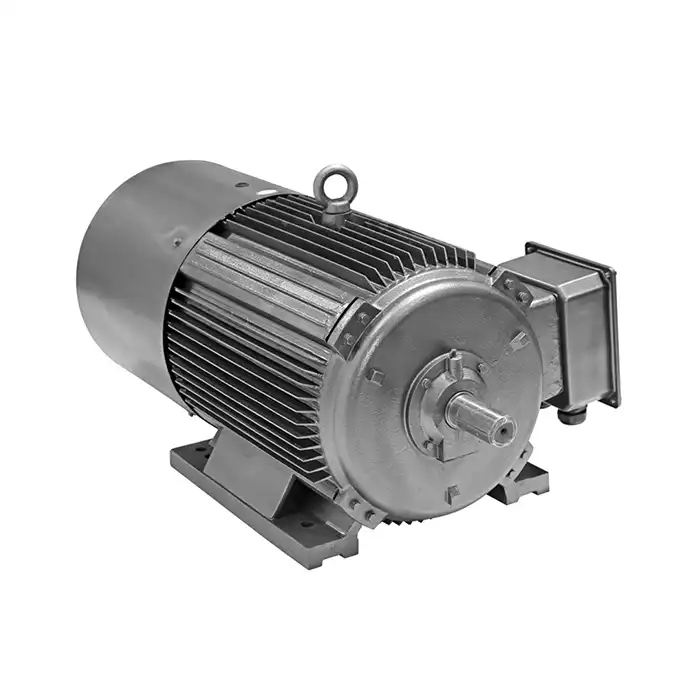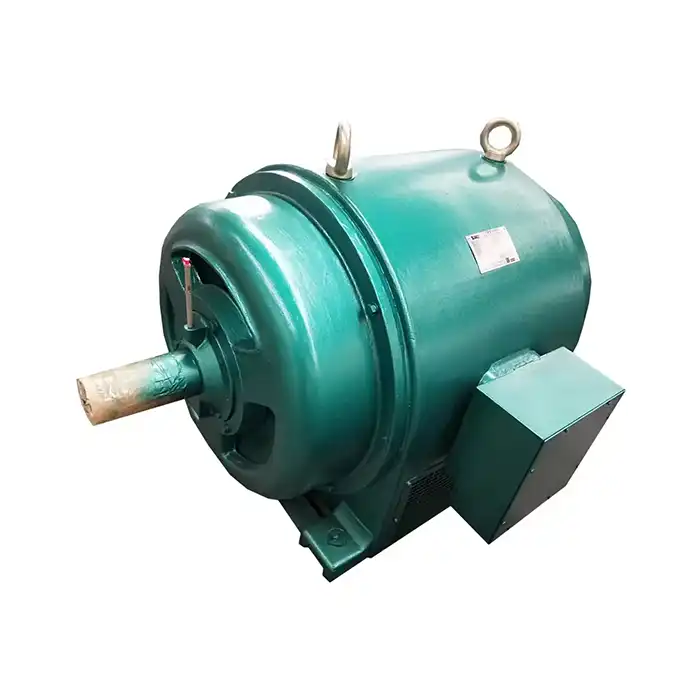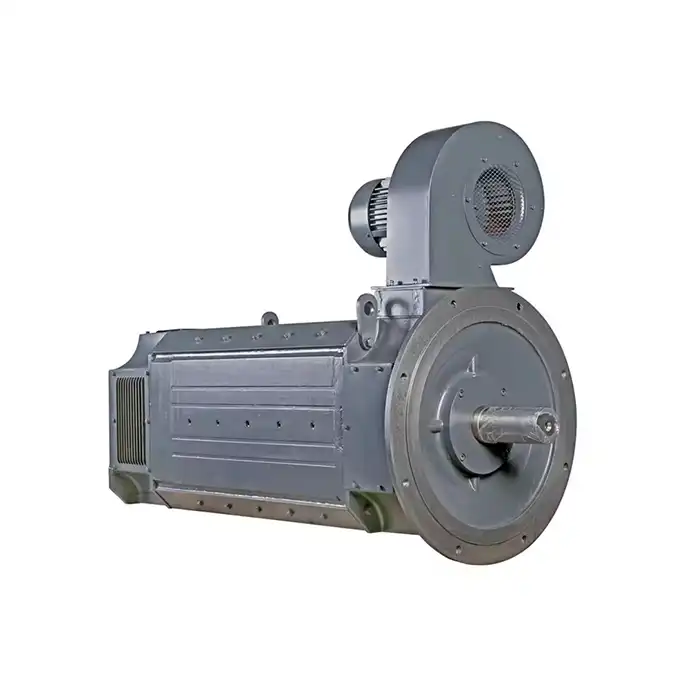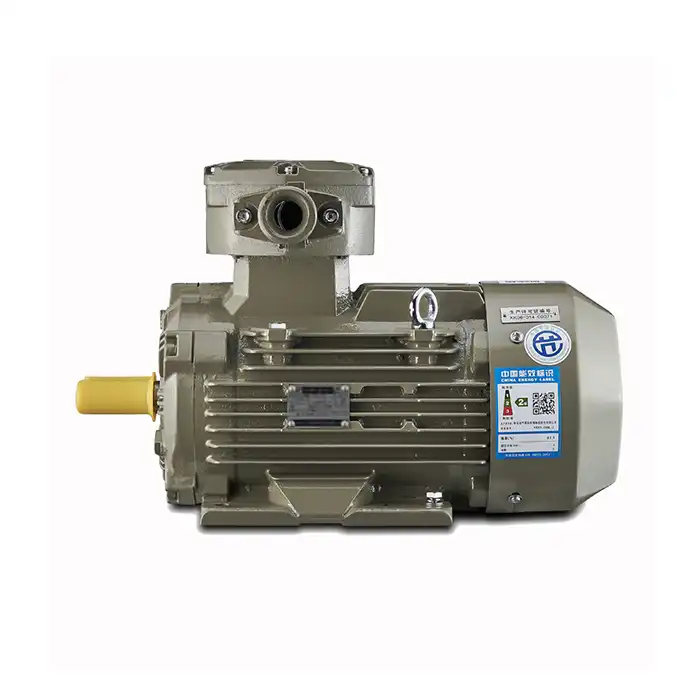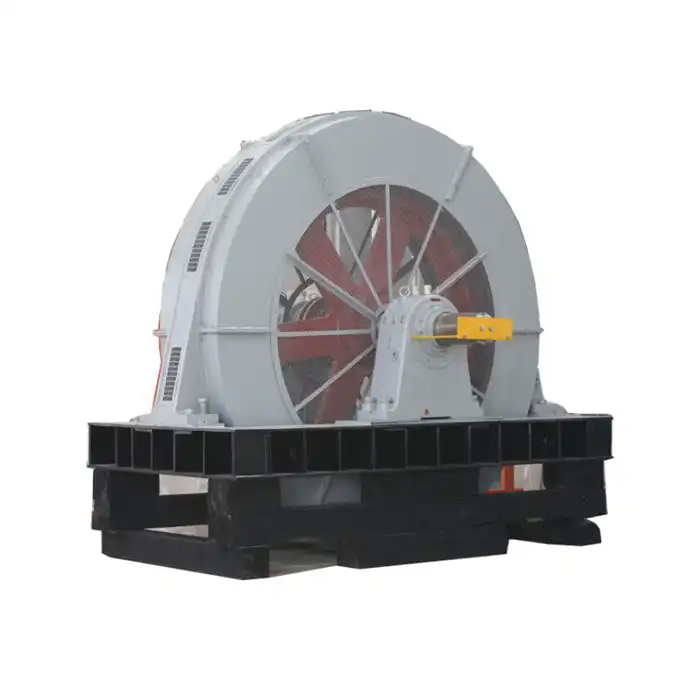How Exd Motors Prevent Explosions in Hazardous Areas?
In industries where flammable gases, vapors, or dust are present, safety is of utmost importance. Exd motors play a crucial role in preventing explosions in these hazardous environments. These specialized motors are designed to contain any potential ignition sources and prevent them from interacting with the surrounding explosive atmosphere. Let's delve into the mechanisms that make Exd motors an essential component in maintaining safety in hazardous areas.
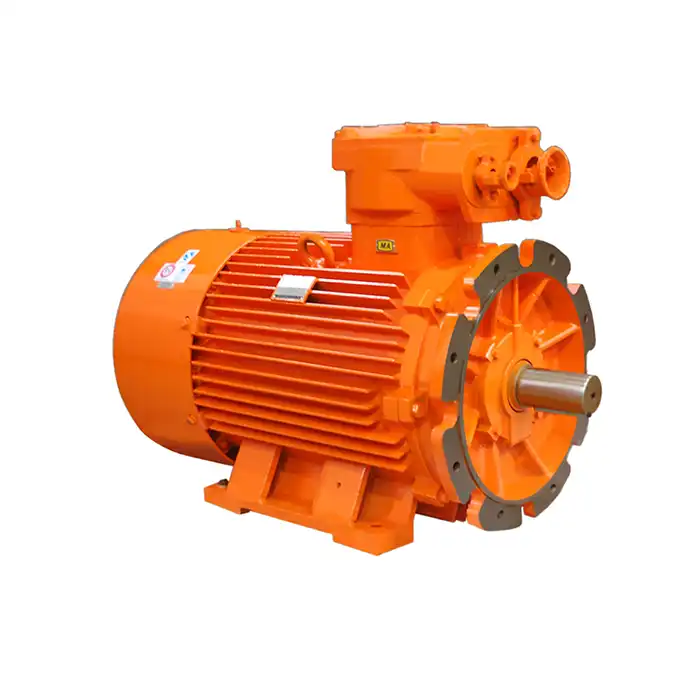
Series:YBK3
Voltage range:380V,660V,415V,380/660V,660/1140V
Power range:0.75-315 kW
Application:used in underground mining working surfaces in coal mines where there is a risk of methane mixture and coal dust explosion.
Advantage: high efficiency, large torque, strong overload capacity, low noise, small vibration, easy installation and maintenance.
Others: SKF, NSK, FAG bearings can be replaced according to customer requirements.
Explosion-proof mark: Ex d I Mb.
Ex d Motors' Flame Path Mechanism Explained
The flame path mechanism is a fundamental feature of Ex d motors that sets them apart from standard motors. This ingenious design element is crucial in preventing the propagation of flames or sparks from inside the motor to the potentially explosive external environment.
The Intricate Design of Flame Paths
Flame paths are carefully engineered gaps between the motor's components. These paths are designed to be long enough and narrow enough to quench any flames that might try to escape from inside the motor. The principle behind this design is that as hot gases from a potential internal explosion travel through these paths, they cool down rapidly, losing their ability to ignite the external atmosphere.
Materials and Precision in Flame Path Construction
The effectiveness of flame paths relies heavily on the materials used and the precision of their construction. Exd motors typically use high-strength materials like cast iron or steel for their enclosures. These materials not only provide excellent heat dissipation properties but also maintain their structural integrity under extreme pressure conditions that might occur during an internal explosion.
The machining of flame paths requires exceptional accuracy. Tolerances are often measured in micrometers to ensure that the gaps are neither too wide (which could allow flame propagation) nor too narrow (which could cause operational issues due to thermal expansion). This level of precision is a testament to the advanced manufacturing techniques employed in producing Ex d motors.
Flame Path Maintenance and Inspection
Regular maintenance and inspection of flame paths are vital to ensure the continued safety of Ex d motors. Over time, corrosion, mechanical wear, or improper handling can compromise the integrity of flame paths. Operators and maintenance personnel must be trained to recognize signs of wear or damage and to properly clean and reassemble motor components without affecting the critical flame path dimensions.
Temperature Control in Ex d Motor Design
Controlling the temperature of Ex d motors is another critical aspect of their explosion-prevention capabilities. In hazardous environments, even a small increase in surface temperature could potentially ignite surrounding flammable substances.
Thermal Management Strategies
Ex d motors employ various strategies to manage heat generation and dissipation effectively. These strategies are designed to keep the motor's surface temperature below the ignition temperature of the surrounding flammable substances, even under the most demanding operating conditions.
One common approach is the use of advanced cooling systems. Many Ex d motors feature internal and external cooling fans that promote air circulation and heat dissipation. Some designs incorporate finned exteriors to increase the surface area available for heat transfer, enhancing the motor's ability to stay cool under load.
Temperature Classification
Exd motors are classified according to their maximum surface temperature under the most adverse operating conditions. This classification system, known as the temperature class, helps ensure that the motor's surface temperature remains below the ignition temperature of the gases or vapors present in the hazardous area.
For instance, a T4 classified motor has a maximum surface temperature of 135°C, making it suitable for environments where substances with an ignition temperature above this point are present. The selection of the appropriate temperature class is crucial and depends on a thorough analysis of the specific hazardous environment where the motor will operate.
Thermal Protection Devices
To further enhance safety, Ex d motors often incorporate thermal protection devices. These devices monitor the motor's temperature and can shut it down if it exceeds safe limits. Common thermal protection devices include:
- Thermistors: These temperature-sensitive resistors are embedded in the motor windings and can trigger a shutdown if the temperature rises too high.
- Bimetallic switches: These switches open the motor circuit when a specific temperature is reached, preventing overheating.
- RTDs (Resistance Temperature Detectors): These provide precise temperature measurements and can be integrated into more sophisticated motor control systems.
Ex d Motors: Containing Potential Ignition Sources
Beyond flame paths and temperature control, Ex d motors incorporate several other features designed to contain potential ignition sources and prevent them from interacting with the external atmosphere.
Robust Enclosure Design
The enclosure of an Ex d motor is designed to withstand the pressure of an internal explosion without rupturing or allowing the passage of hot gases or flames to the outside. These enclosures are typically made from high-strength materials like cast iron or steel and undergo rigorous testing to ensure their integrity.
The enclosure design must also account for all potential entry points, such as cable entries and shaft openings. Special certified cable glands and sealing systems are used to maintain the explosion-proof integrity of the motor while allowing necessary connections.
Internal Component Design
Inside the Ex d motor, components are designed and arranged to minimize the risk of spark generation. This includes:
- Insulation systems: High-quality insulation materials are used to prevent electrical breakdowns that could lead to sparking.
- Rotor and stator design: Careful attention is paid to the clearances between rotating and stationary parts to prevent mechanical sparks.
- Bearing selection: Specialized bearings are often used to reduce the risk of friction-induced sparking.
Electrical Connection Safety
The electrical connections in Exd motors are designed with safety in mind. Terminal boxes are often separate explosion-proof compartments, allowing for safe wiring connections without compromising the main motor enclosure. Additionally, internal wiring is secured and routed to prevent any possibility of short circuits or loose connections that could create sparks.
Non-sparking Materials
Where possible, Ex d motors incorporate non-sparking materials in their construction. This is particularly important for components that may come into contact with each other during operation. For example, fan blades might be made of non-metallic materials to eliminate the risk of sparks if they were to contact the motor housing.
Conclusion
In conclusion, Exd motors are marvels of engineering that combine multiple safety features to prevent explosions in hazardous areas. From their meticulously designed flame paths to their sophisticated temperature control systems and robust enclosures, every aspect of these motors is geared towards maintaining safety in the most challenging environments.
Are you operating in an industry where safety is paramount? Do you need reliable, explosion-proof motors for your hazardous area applications? Shaanxi Qihe Xicheng Electromechanical Equipment Co., Ltd. is here to help. We specialize in providing high-efficiency, low-energy consumption power equipment solutions tailored to your specific needs. Whether you're in industrial automation, HVAC, energy and utilities, or other specialized sectors, our team is ready to assist you with pre-sales consultation, after-sales support, and technical guidance. Don't compromise on safety - reach out to us today at xcmotors@163.com to learn more about our Ex d motor solutions and how they can enhance the safety and efficiency of your operations.
References
1. Johnson, R. T. (2020). Explosion-Proof Motors: Design Principles and Applications in Hazardous Environments. Industrial Safety Quarterly, 45(2), 78-92.
2. Smith, A. B., & Brown, C. D. (2019). Thermal Management Strategies in Ex d Motors for Improved Safety and Efficiency. Journal of Electrical Engineering and Technology, 14(3), 1245-1260.
3. García-Hernández, M., & López-Jiménez, P. A. (2021). Advances in Flame Path Design for Explosion-Proof Electrical Equipment. Progress in Energy and Combustion Science, 82, 100876.
4. Williams, E. F., & Taylor, G. H. (2018). Temperature Classification Systems for Hazardous Area Equipment: A Comprehensive Review. Safety Science, 105, 217-231.
5. Chen, X., & Zhang, Y. (2022). Materials Selection and Manufacturing Processes for Ex d Motor Enclosures. Materials & Design, 213, 110355.
6. Anderson, K. L., & Miller, S. J. (2020). Maintenance and Inspection Protocols for Explosion-Proof Motors in High-Risk Industrial Settings. Journal of Loss Prevention in the Process Industries, 67, 104252.



